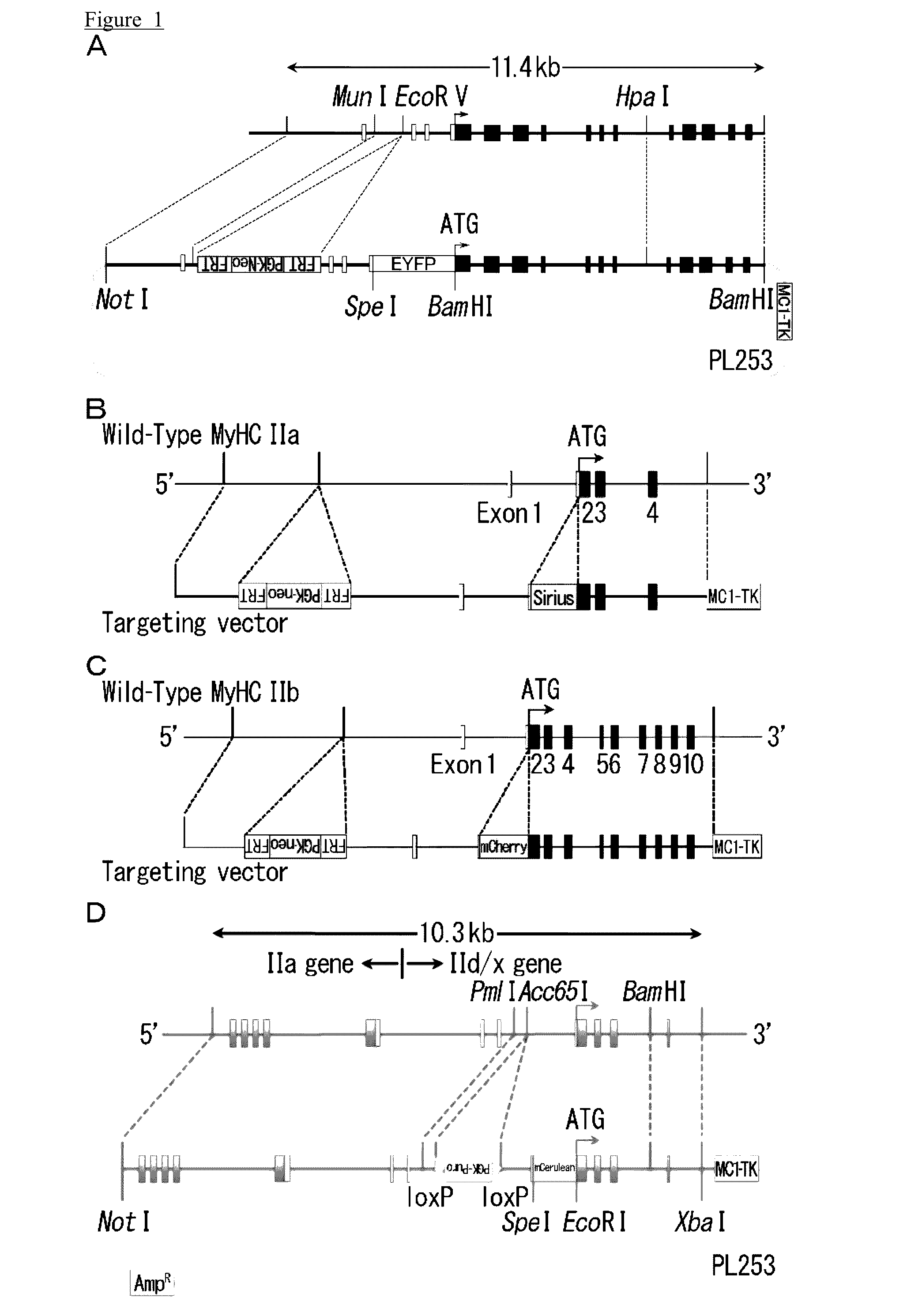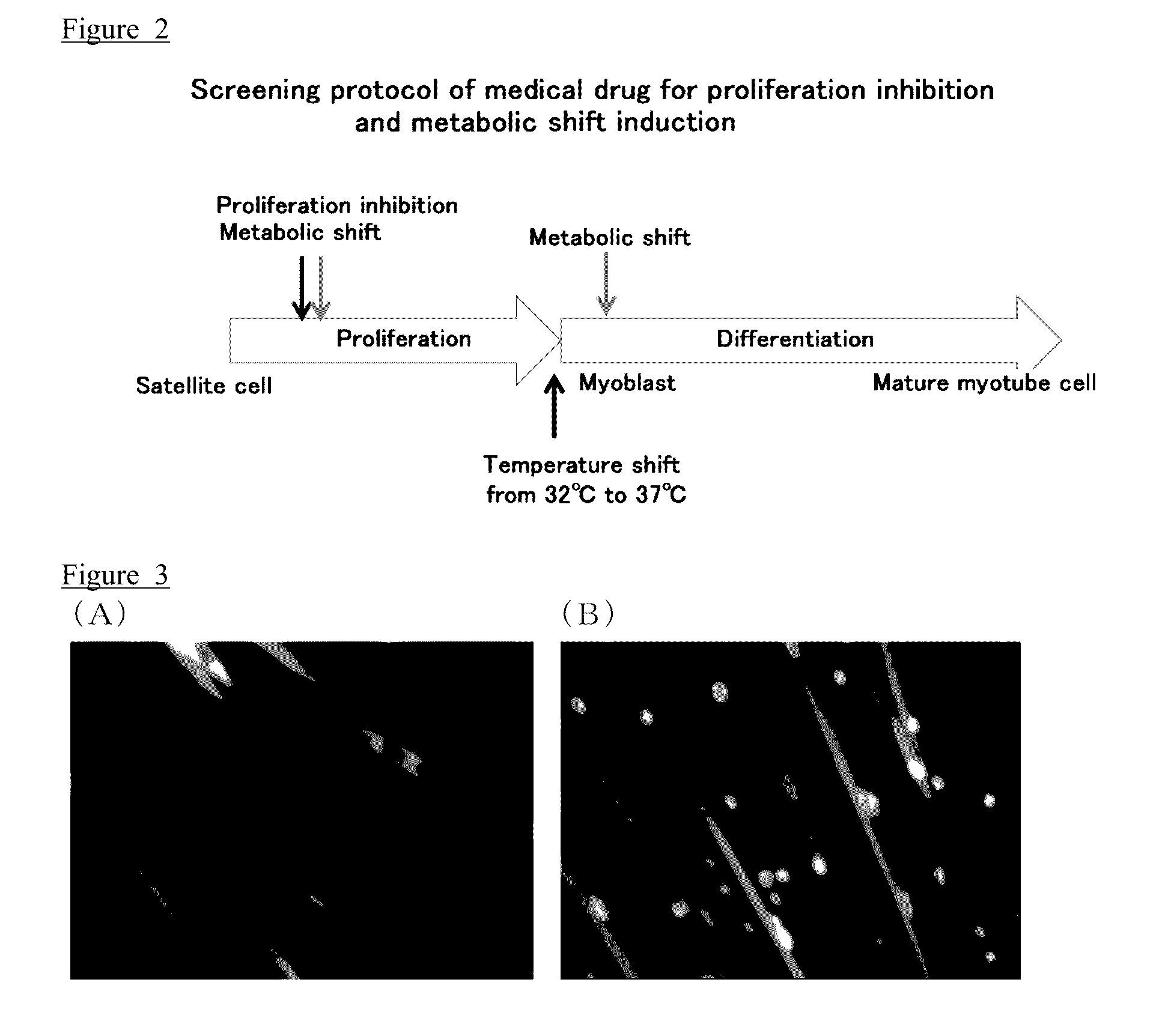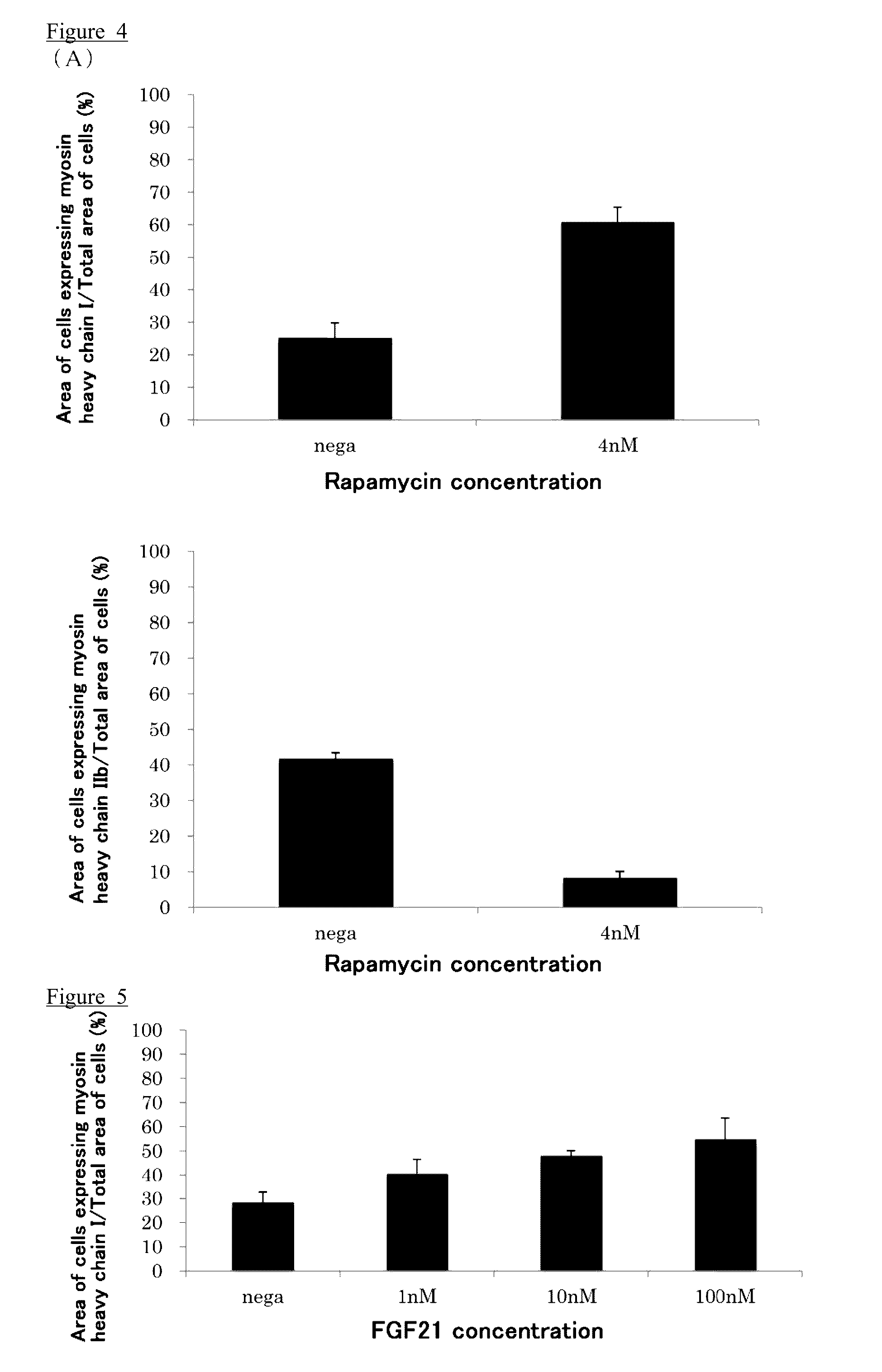Muscle stem cell or myoblast, method for screening substances that participate in metabolic conversion using same, and pharmaceutical composition comprising substance obtained from said screening method
a technology of muscle stem cells and myoblasts, applied in the direction of peptide/protein ingredients, metabolic disorders, instruments, etc., can solve the problems of not being used to develop therapeutic agents and effective therapeutic agents, and achieve the effect of treating or preventing skeletal muscle weakness
- Summary
- Abstract
- Description
- Claims
- Application Information
AI Technical Summary
Benefits of technology
Problems solved by technology
Method used
Image
Examples
preparation example 1
[0157]In this preparation example, a knock-in mouse wherein myosin heavy chain I fusion gene, a myosin heavy chain IIa fusion gene, a myosin-heavy chain IId / x fusion gene, and a myosin-heavy chain IIb fusion gene were introduced. A fusion gene of the myosin-heavy chain IIa gene and the fluorescent protein, Sirius gene, a fusion gene of the myosin-heavy chain IIb gene and the fluorescent protein mCherry gene, and a fusion gene of the myosin-heavy chain IId / x gene and the fluorescent protein, mCerulean gene, were introduced to the MyHCI-YFP knock-in mouse (National Institute of Health) wherein the fusion gene of the myosin-heavy chain I gene and fluorescent protein YFP, was introduced.
[0158]In order to prepare a targeting vector for the knock-in mouse, the BAC library of male C57BL / 6J mouse, i.e., RP24-149P22 and RP24-374D24 were purchased from BACPAC Resources, and target genomic sequences of the MyHCIIa gene, MyHCIIb gene, and MyHCIId / x gene were subcloned respectively. For the subc...
example 1
[0159]In this Example, muscle stem cells (satellite cells) were separated from the knock-in mouse prepared in Preparation Example 1 by a negative selection and a positive selection using FACS.
[0160]To the muscles separated from the mouse, twice the amount of 0.2wt % collagenase solution was added, and the mixture was stirred for 1 hour. The mixture solution was triturated using a needle of 18 gauge, and then stirred at 37° C. for 30 minutes. The mixture solution was obtained through a cell strainer with a 40 μm pore size, and centrifuged at 1500 rpm for 10 minutes at 4° C. A supernatant was removed, and erythrocytes were hemolyzed by adding an ammonium chloride solution for removing erythrocytes to a pellet and being allowed to stand on ice for 30 seconds. PBS (2% FBS) was added thereto, and the mixture was centrifuged at 1500 rpm for 10 minutes at 4° C. A supernatant was removed, and a pellet was suspended using PBS (2% FBS, SM / C-2.6-biotin (×200)), and was allowed to stand on ice ...
example 2
[0161]In this Example, immortalized cells of the muscle stem cells (satellite cells) were obtained. In order to obtain the immortalized cells, the Immortmouse having an H-2Kb-promoter and a temperature-sensitive SV40 large T antigen inducible by IFN-γ, was used. In the Immortmouse, an SV40 large T antigen is expressed by IFN-γ, and an immortalization of a cell can be induced.
[0162]The knock-in mouse prepared in Preparation Example 1 and the Immortmouse were crossbred to obtain offspring. Muscle stem cells (satellite cells) were separated from the obtained offspring in accordance with the method of Example 1. An immortalization of the separated muscle stem cells was induced by culturing the same at 33° C., in the presence of 10 ng / mL of IFN-γ. The temperature-sensitive SV40 large T antigen was degraded by culturing the resulting cells at 37° C., to obtain the immortalized muscle stem cells (satellite cells).
[0163]In this Example, 27 test compounds were tested by the screening method ...
PUM
 Login to View More
Login to View More Abstract
Description
Claims
Application Information
 Login to View More
Login to View More - R&D
- Intellectual Property
- Life Sciences
- Materials
- Tech Scout
- Unparalleled Data Quality
- Higher Quality Content
- 60% Fewer Hallucinations
Browse by: Latest US Patents, China's latest patents, Technical Efficacy Thesaurus, Application Domain, Technology Topic, Popular Technical Reports.
© 2025 PatSnap. All rights reserved.Legal|Privacy policy|Modern Slavery Act Transparency Statement|Sitemap|About US| Contact US: help@patsnap.com



